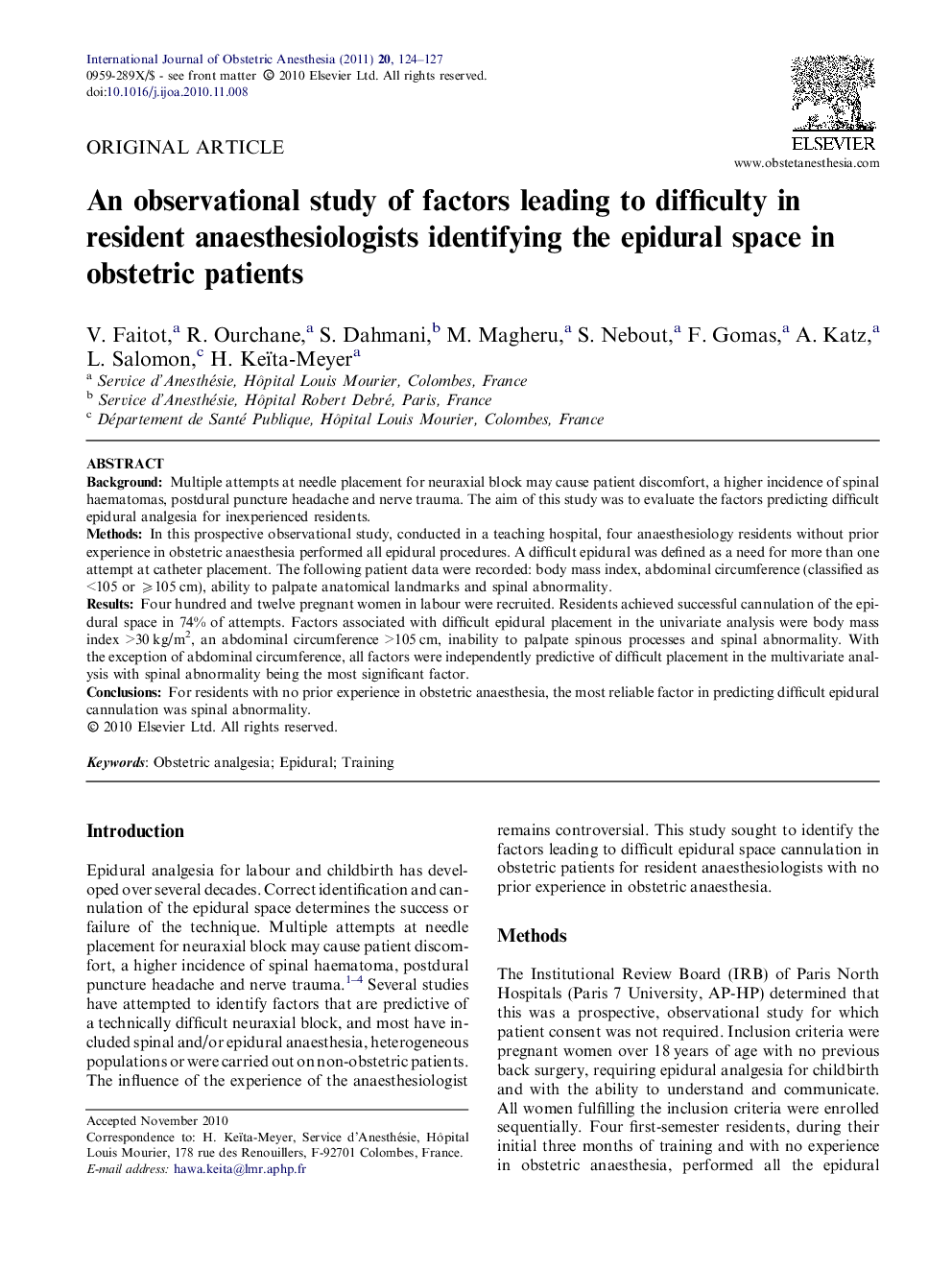| Article ID | Journal | Published Year | Pages | File Type |
|---|---|---|---|---|
| 2758017 | International Journal of Obstetric Anesthesia | 2011 | 4 Pages |
BackgroundMultiple attempts at needle placement for neuraxial block may cause patient discomfort, a higher incidence of spinal haematomas, postdural puncture headache and nerve trauma. The aim of this study was to evaluate the factors predicting difficult epidural analgesia for inexperienced residents.MethodsIn this prospective observational study, conducted in a teaching hospital, four anaesthesiology residents without prior experience in obstetric anaesthesia performed all epidural procedures. A difficult epidural was defined as a need for more than one attempt at catheter placement. The following patient data were recorded: body mass index, abdominal circumference (classified as <105 or ⩾105 cm), ability to palpate anatomical landmarks and spinal abnormality.ResultsFour hundred and twelve pregnant women in labour were recruited. Residents achieved successful cannulation of the epidural space in 74% of attempts. Factors associated with difficult epidural placement in the univariate analysis were body mass index >30 kg/m2, an abdominal circumference >105 cm, inability to palpate spinous processes and spinal abnormality. With the exception of abdominal circumference, all factors were independently predictive of difficult placement in the multivariate analysis with spinal abnormality being the most significant factor.ConclusionsFor residents with no prior experience in obstetric anaesthesia, the most reliable factor in predicting difficult epidural cannulation was spinal abnormality.
